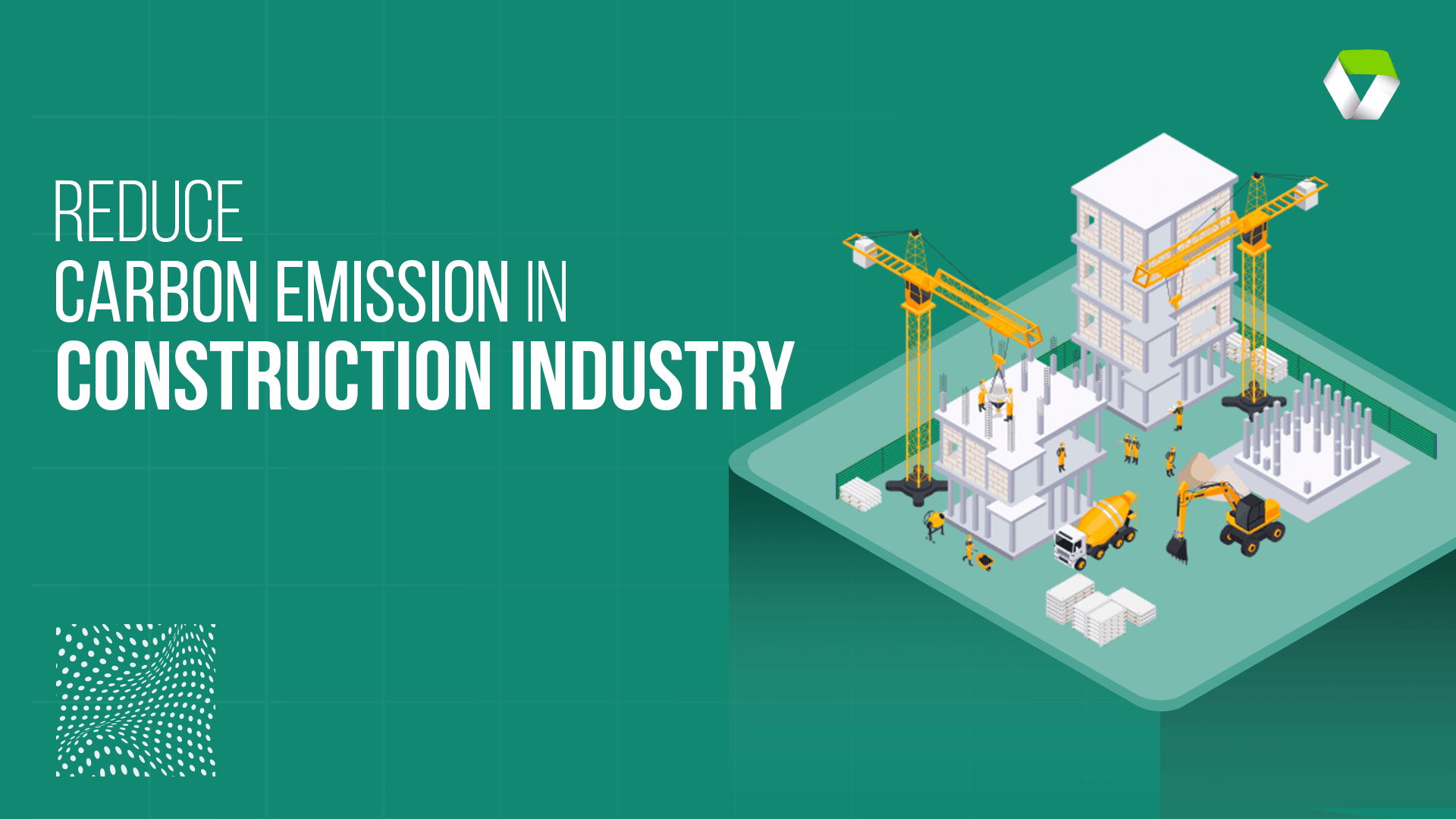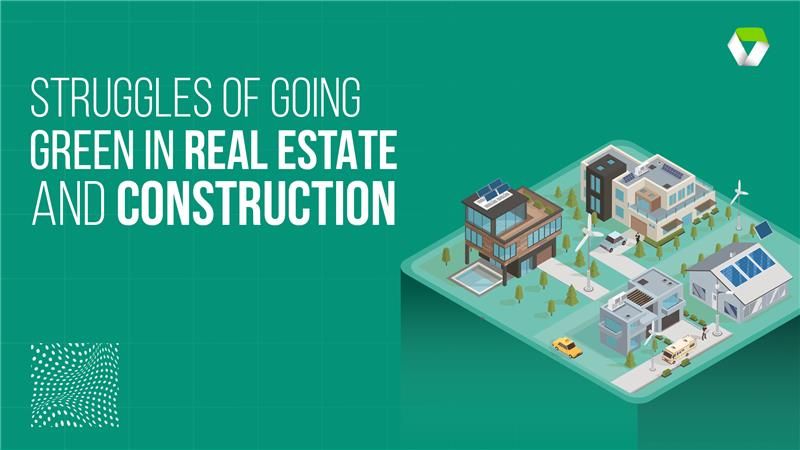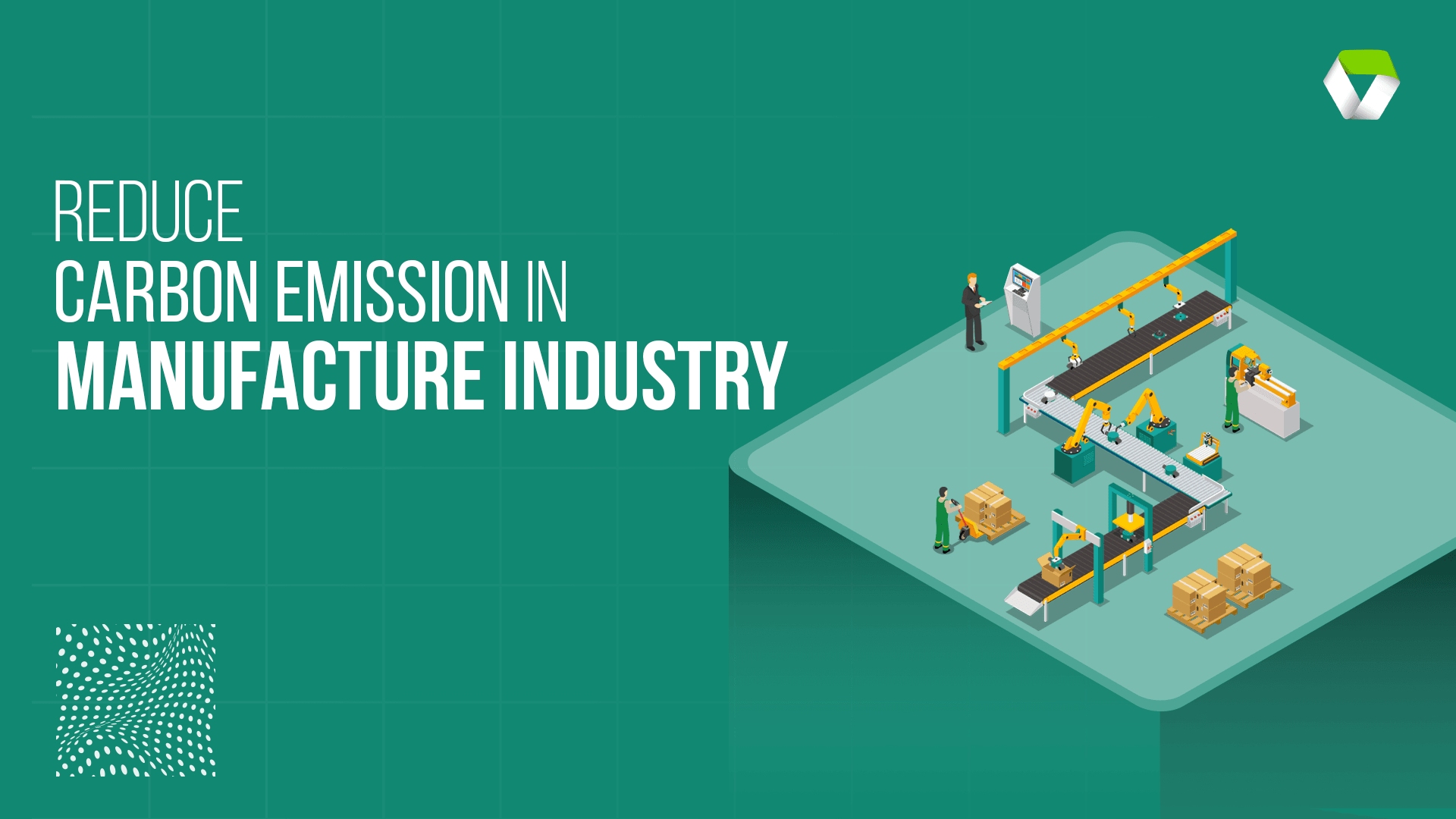10 Way to Reduce Carbon (GHG) in the Construction Industry

The construction industry is a significant contributor to global Carbon, a.k.a., Greenhouse gas (GHG) emissions and the built environment accounts for almost 40% of gross annual carbon emissions worldwide. From material extraction to building operations, the sector's carbon footprint is substantial and there’s mounting pressure on construction companies to reduce their environmental impact. To mitigate climate change, the sector must undergo a substantial transformation. This blog explores 10 key strategies for construction companies and developers to reduce their carbon footprint.
Why does sustainability matter for construction companies?
Climate change is an existential threat, and the construction sector is a major contributor to this crisis. Reducing GHG emissions is essential to mitigate its impacts. Secondly, regulatory pressures are intensifying, with governments worldwide imposing stricter environmental standards on the industry. Compliance with these regulations is crucial for avoiding penalties and maintaining a competitive edge.
Beyond compliance, sustainability offers significant economic benefits. By adopting eco-friendly practices, construction companies can reduce operational costs, enhance their reputation, and attract environmentally conscious clients. Additionally, there's a growing market for sustainable buildings, presenting new opportunities for growth and innovation.
Understanding the Carbon Footprint of Construction
To effectively reduce carbon emissions, it's essential to understand the construction industry's carbon footprint. The construction lifecycle comprises several stages, each contributing to the overall carbon footprint. Material extraction and manufacturing form the initial phase, followed by transportation and logistics. The construction process itself generates emissions through equipment use and waste disposal. Finally, the building's operational phase contributes to the carbon footprint through energy consumption.
Embodied carbon: Emissions associated with material extraction, manufacturing, and transportation.
Operational carbon: Emissions generated during the building's operation, such as energy consumption for heating, cooling, and lighting.
Construction-related emissions: GHGs (carbon emissions) produced during the construction process, including fuel combustion from construction equipment, machinery and transportation.
10 Strategies for Reducing Carbon Emissions in Construction
Here are 10 actionable strategies that will help you reduce construction carbon footprint and transition to green construction.
1. Encourage low-carbon design
The process of reducing carbon emissions should start even before construction gets underway. During the design phase, critical choices can be made to cut down on emissions throughout the building's entire lifecycle. This is known as a Life Cycle Assessment (LCA) and includes considerations such as repairs, energy requirements, and water needs for the building's lifespan. Designers can take a low-carbon approach to all design decisions and various aspects of the project’s performance.
2. Sustainable material selection and management
Selecting low-carbon building materials and sustainable alternatives is fundamental to reducing embodied carbon in construction. Brand-new steel carries an embodied carbon footprint five times greater than recycled content steel and the cement industry alone contributes to 8% of global emissions.
Materials like recycled steel, reclaimed wood, and low-cement concrete have a lower environmental impact compared to conventional options like concrete and new steel.
Optimizing material usage through efficient design and construction processes also can significantly reduce waste and associated emissions.
Embracing circular economy principles by reusing, recycling, and repurposing materials further contributes to sustainability. For instance, reusing existing foundations and structures through renovation projects can reuse of existing foundations and structures through renovation projects can potentially save up to 75% of embodied carbon.
3. Ensure Energy Efficiency
Energy-efficient building design is essential for reducing operational carbon. Maximizing natural light, optimizing building orientation, and incorporating high-performance insulation can significantly lower energy consumption. Installing energy-efficient HVAC systems, lighting, and appliances further reduces the building's carbon footprint. Integrating renewable energy sources like solar panels or wind turbines can offset energy consumption and generate clean electricity. This transition to a sustainable energy solution also significantly reduces the overall operational carbon footprint.
4. Construction Process Optimization
Minimize the carbon impact of construction processes and activities by following sustainable practices. Lean construction principles can streamline the construction process, reducing waste, rework, and energy consumption. 70% to 80% of unused construction materials and demolition waste are discarded. Much of this waste can be reused or recycled. For example, 40% of discarded lumber can be repurposed for wood flooring material. Leading companies are already realizing substantial CO2 savings through circular material models.
Employing fuel-efficient and electric construction equipment minimizes emissions from on-site activities.
Optimizing site layout and transportation routes can also reduce fuel consumption and associated emissions. Another way to reduce transportation emissions is to source local materials.
5. Digitalization and Technology
Technology can also play a role in transitioning the construction industry towards embodied carbon net zero. Building Information Modelling (BIM) is a powerful tool for optimizing material usage, reducing waste, and improving construction planning. Employing Project Management Solutions can help drive more efficient cross-collaboration and stakeholder communication. Using carbon emissions management software can help monitor energy consumption, track emissions, and identify areas for improvement. In addition, using emerging technologies like IoT and sensor technology can optimize building performance and reduce operational energy consumption.
6. Supply Chain Emission Management
To take actionable steps towards GHG reduction targets, developers need to reduce supply chain emissions. Evaluate suppliers based on their sustainability performance and carbon footprint and collaborate with suppliers to reduce their carbon footprint. Construction companies can significantly impact their overall emissions by selecting suppliers with strong sustainability practices and promoting the use of low-carbon materials. Establishing transparent supply chains enables better emissions tracking and identifying hotspots for improvement.
7. Focus on workforce education and training
Investing in employee training and education is essential for fostering a sustainable culture. Raising awareness about climate change and the company's sustainability goals motivates employees to contribute to carbon reduction efforts. Skills development in areas like sustainable construction practices, energy efficiency, and waste management empowers employees to implement effective solutions. Creating a culture of innovation encourages employees to propose new ideas for reducing the company's carbon footprint.
8. Carbon Offsetting and Measurement
Accurately measuring carbon footprint is crucial for identifying reduction opportunities. By tracking material usage, energy consumption, and other relevant factors, construction companies can gain valuable insights into their carbon footprint.
Regularly assessing the company's carbon footprint is essential for tracking progress and identifying reduction opportunities. Carbon accounting platforms like Sustainium can help you do this effectively. Carbon offsetting can be considered to neutralize residual emissions. Transparency and reporting on carbon emissions enhance the company's reputation and builds trust with stakeholders.
9. Leverage green financing and incentives
Accessing green financing can support investments in sustainable projects. Government incentives and policies can play a crucial role in driving the adoption of low-carbon technologies and practices. Developing a strong business case for sustainability investments is essential to secure funding and support within the organization.
10. Collaborate and innovate
Collaborate with industry peers, government agencies, and research institutions to accelerate the research, development, and adoption of sustainable solutions. Embracing innovation and staying informed about the latest sustainability trends will be crucial for companies to remain competitive and successful in the low-carbon economy.
Building the Future with Sustainable Construction
Achieving net-zero emissions in the construction industry requires a long-term commitment and a comprehensive approach. Certifications like LEED and BREEAM provide frameworks for assessing and improving building sustainability. Overcoming upfront costs, skill shortages, and transitions requires strategic planning and collaboration but will benefit in the long run.
Ensuring transparency and accountability about carbon emissions, following sustainable construction practices, and embracing emerging technologies, such as advanced materials, digital fabrication, and renewable energy integration are key steps to building a sustainable future for the construction industry. By investing in research and development, the industry can unlock new opportunities for reducing carbon emissions and creating sustainable buildings.
Assessing, monitoring, tracking, and reporting the impact of emission reduction strategies helps you stay on track to achieving your carbon reduction goals. Sustainium can help you in your decarbonization journey and simplify carbon accounting for you. Talk to our experts.






